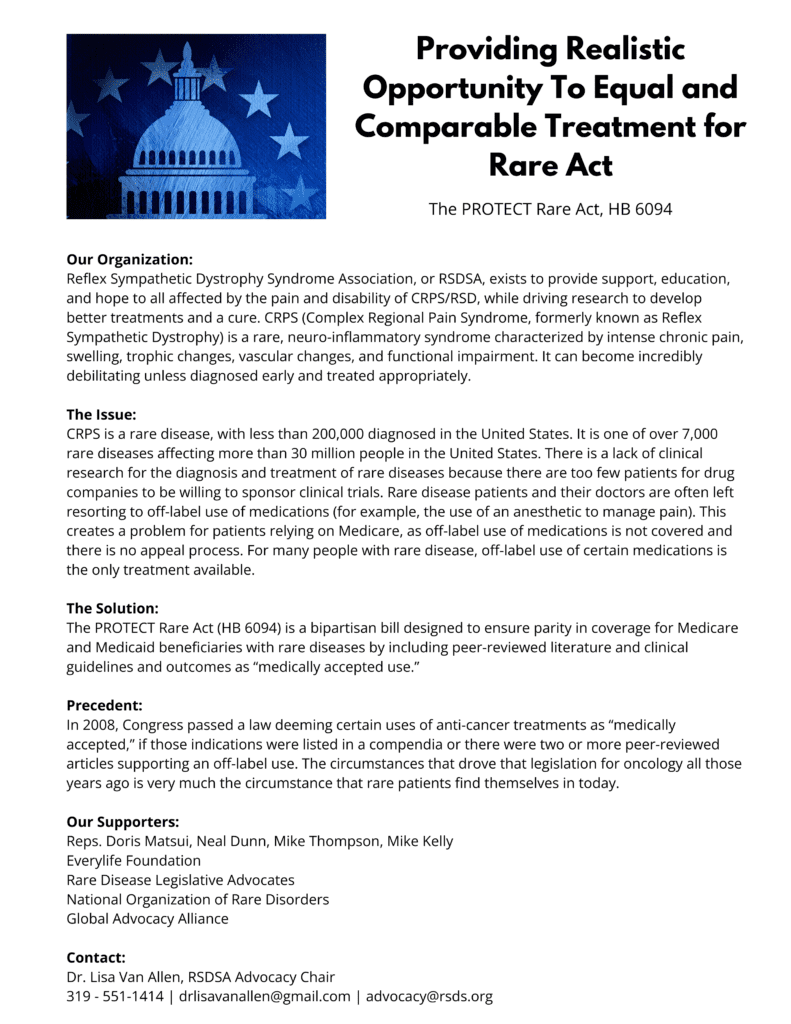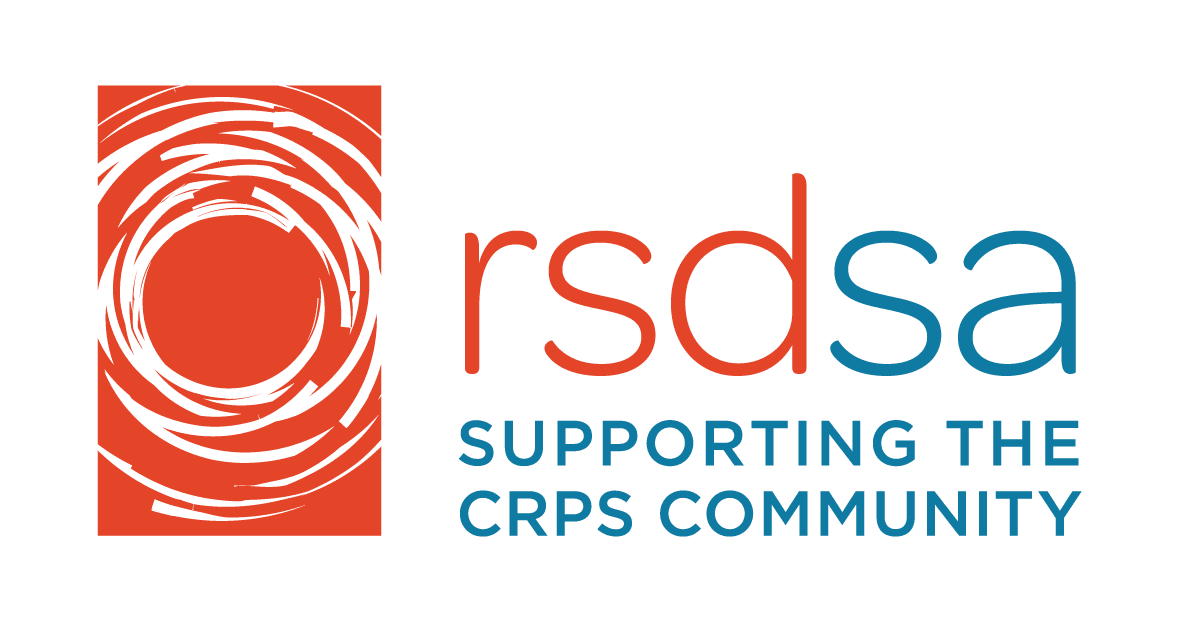Written by Dr. Nina Slota for the RSDSA blog.
The ADA believes in me and you, because in work-settings it grants us reasonable accommodations if we are “otherwise qualified candidates,” meaning we have the skills for the job, but our disability gets in the way. Accommodations are our civil right; they level the playing field so we can show what we can do. I’ve used the ADA numerous times in school and work settings, so I want to tell you about my experiences and what I’ve learned.
Before we get to my story, let’s start with the current definition of disability: “(A) a physical or mental impairment that substantially limits one or more major life activities. . . (B) a record of such an impairment; or (C) being regarded as having such an impairment. . . .” That brings us to the definition of major life activity, which can be activities or biological functions, including, “caring for oneself, performing manual tasks, seeing, hearing, eating, sleeping, walking, standing, lifting, bending, speaking, breathing, learning, reading, concentrating, thinking, communicating, and working [among others]” and, “. . . functions of the immune system, normal cell growth, digestive, bowel, bladder, neurological, brain, respiratory, circulatory, endocrine, and reproductive functions [among others].” Under the law, even if our symptoms come and go, we’re covered; similarly, even if we use medications, devices, assistive technology, or have figured out unique ways to get things done, we are covered.
Back to my story. By 1990, I “only” had inflammatory bowel disease and osteoarthritis. I was a busy college student; I wasn’t paying attention to politics. Even if I had been aware of the ADA, my younger self probably would have said that I was chronically ill but not disabled. My day-to-day reality was that I hadn’t told my professors, I didn’t have any academic services, and only my closest friends knew about my illnesses.
The first time I used the ADA was in 1993. I was a first-year graduate student and Meniere’s Syndrome (a vertigo disorder) had joined my life; additionally, prednisone for my IBD was again readying to cause chaos. Current college students shouldn’t recognize the process I followed back then: I talked to a prof, he told me to talk to the Dean, and the Dean sent me back to each prof. No paperwork was needed; agreements were made with a handshake.
At the end of the year, I transferred graduate schools; my new school had a disability office run by a lawyer. She wasn’t there to help students; she was there to file documentation. I used the ADA several more times throughout my schooling for my comprehensive/doctoral exams. My accommodations included extra time, a private room to take the test in, and the ability to use the restroom. In 2005, while still a student, I was injured as a pedestrian and diagnosed with RSD/CRPS. It was in my left leg and has fortunately stayed there.
When I became a professor, my office happened to be closest to the elevator and bathroom; there was no need to use the ADA. During lectures, I’d lean against a wall, shift between my feet, and/or use my arms to put much of my weight on the lectern. My students could see my TENS unit; my juniors and seniors knew lumbar block days meant I’d sit and we’d watch and discuss videos.
In 2014-2015, I was treated for cancer—surgery, chemo, and radiation. Like 50% of adults with cancer, I kept working. Because of my CRPS, I was at an increased risk for lymphedema, which is swelling due to missing or malfunctioning lymph nodes. Sure enough, my lymphedema developed during finals week in December of 2015. Luckily, I was already receiving PT for my CRPS, so my amazing physical therapist started my lymphedema treatment within 24 hours of symptom onset. My right, dominant, arm was wrapped in bandages from my fingertips to my shoulder. Because I couldn’t type quickly enough to write my syllabi, I needed work accommodations. This time, I requested speech-to-text software; it eventually arrived. The following spring, I fell on ice and broke my good arm, which required surgery. In addition to the regular anesthesia, the anesthesiologist also gave me a ganglion block; thankfully, my CRPS did not spread. Nevertheless, with neither arm functioning too well, I again needed accommodations.
Then, 2020 happened. For several years, I had been on immunosuppressants for my inflammatory bowel disease; therefore, I was at high risk for COVID, especially before the vaccines. My school moved online for spring 2020. I realized how much teaching from home changed my life and increased my productivity. I could manage my IBD better, because I was 10 steps from the bathroom (which never had a line) and I was 35 steps round-trip from my fridge. What I hadn’t expected was that I could manage my CRPS better; I could wear socks or slippers for my CRPS, and I didn’t have to worry as much about falls or my balance because I knew where every uneven spot in my floor was. I could keep my home office as warm as I needed. By the end of the day, I wasn’t as fatigued from my CRPS. I taught remotely for an additional two years.
I left academia in 2022. With the support of my county vocational rehabilitation office, I received re-imbursement for life coach training and have started my own life coaching and consulting business, Voyage Through Disability. Now, I can set my own hours, control my own environment, and I don’t need to file ADA paperwork with myself!
What is the ADA paperwork process? Please remember that I am writing this as someone who has used the ADA repeatedly, but I am not a lawyer or a human resources administrator. The accommodations request process varies a bit by company, so check with your employer. However, there are some commonalities. Typically, you’ll need documentation from one or more medical or mental health professionals, and you may have to write something yourself. The key points are to show that you have a diagnosis, that it interferes with one or more major life activities, and that the accommodation you are requesting is related to your disability’s interaction with your job. For example, perhaps your CRPS means you have trouble standing, but you have a job as a cashier. You can use the appropriate paperwork to ask your company to provide you with a stool, so you can sit when needed. Hopefully, your company will quickly approve your paperwork and you’ll be sitting on the company’s chair within days. I should note that in this example because a physical item was being requested, your local vocational rehabilitation office might be able to help.
However, the business can claim that the accommodation you have requested will create an “undue hardship.” Often, but not always, this is based on financial issues. A stool can be relatively inexpensive, but if you had asked for a specific, ergonomic $1,200 stool, the company could say it would be a hardship to afford. If the issue isn’t resolved, the decision goes through an interactive process, in which you and the company’s ADA administrators try to reach an agreement. If it is reached, you or the administrators will inform your supervisors.
However, what happens if the process doesn’t go smoothly? The answer might be to have a free consultation with an employment lawyer. You could also contact the Job Accommodation Network, your state’s resources, or the federal Equal Employment Opportunity Commission (EEOC) office for your region. Any or all of these information sources may help you understand your rights and which steps you feel comfortable taking. If you decide to proceed, you may want to hire a lawyer. Some employment discrimination lawyers will want a partial payment in advance; others will understand that you don’t have the resources and will take a percentage of your eventual settlement. Unlike in medical malpractice cases, the money IS taxable, so keep that in mind.
If you decide to officially file your case with the EEOC, your employer will be informed instantly. Using the EEOC system, your employer may ask if you’d like to try mediation. If you have a lawyer, talk to them before you decide. If you aren’t willing to mediate or the mediation fails, the EEOC will make a ruling as to how strong they think your case is. If it’s a really strong case and has federal implications, the EEOC will become your lawyer. More often, they will simply tell you that they think you have a case, but that a jury may not agree. On TV, court cases are resolved in an hour; in real life, depending on the number of appeals, cases can take years.
Whichever level of decision-making you are facing, please remember that the ADA was written for us and believes in our ability to hold down the right job. Accommodations aren’t special treatment; they are a civil right that people peacefully protested for.
Personally, I am much happier now that I am running my own business. I can organize my environment to fit my needs. Please visit my website to explore my services, including life coaching for adults with chronic pain or other disabilities, academic life coaching for undergraduate or graduate students, and corporate consulting about the ADA for small-to-medium sized businesses.
Dr. Nina Slota was trained as a research developmental health psychologist. She taught graduate and undergraduate students and is now founder and president of her company, Voyage Through Disability. If you have any questions, please contact her at [email protected].


